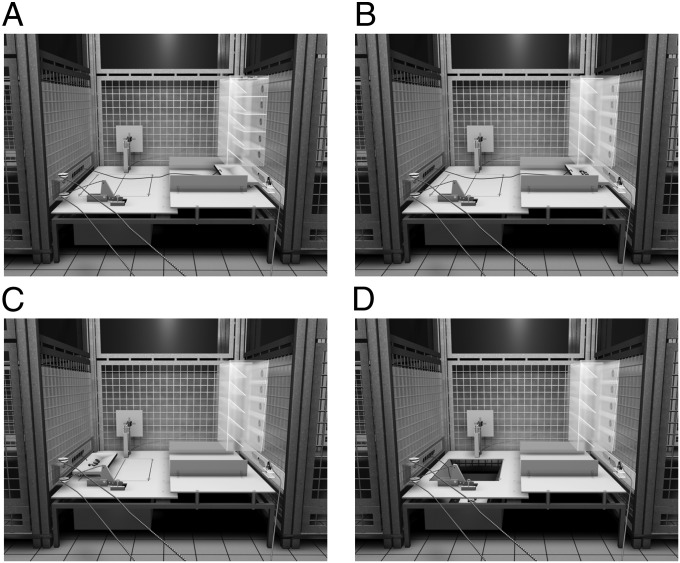Fig. 1.
Illustration of the testing environment. The three cages are shown with the thief’s cage on the left, the actor’s in the center, and the victim’s to the right. The apparatus was in a booth that allowed limited access by the chimpanzees. (A) In the starting position, the food is on the top tray of the victim’s food box. (B) By manipulating five sliders (not shown), the food drops from the top shelf to the bottom, where it falls onto a food tray. Once the food is on the food tray, the experimenter (outside the room) pulls a rope, allowing the victim to slide a panel to access the food tray. (C) The food is then moved to the thief’s position, either by the thief (after the experimenter allows access to the rope via a rope-and-pulley), or manually by the experimenter. (D) Once the food tray is in front of the thief’s cage (whether a chimpanzee is there or not), the trapdoor could be collapsed by the actor, either by pulling a rope or pressing a large button (the experimenter first would cause the trapdoor to engage with the releasing mechanisms to prevent premature collapsing).

